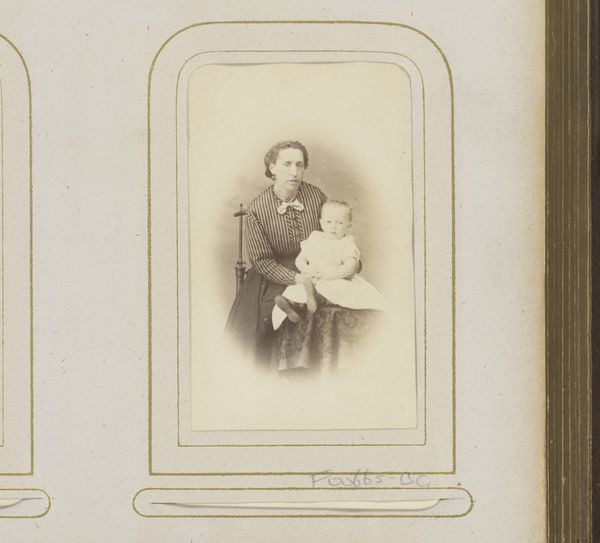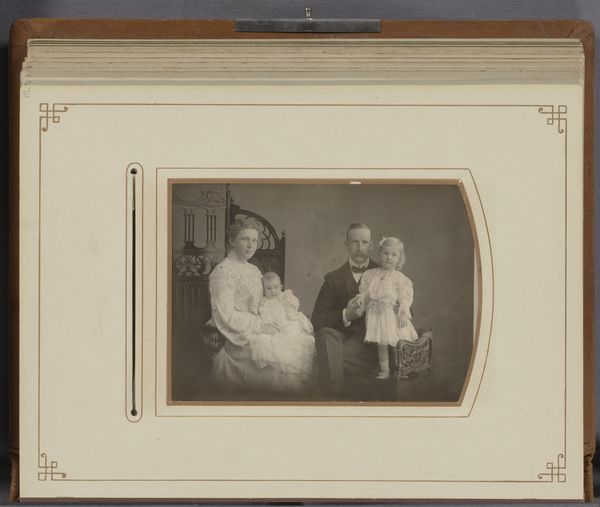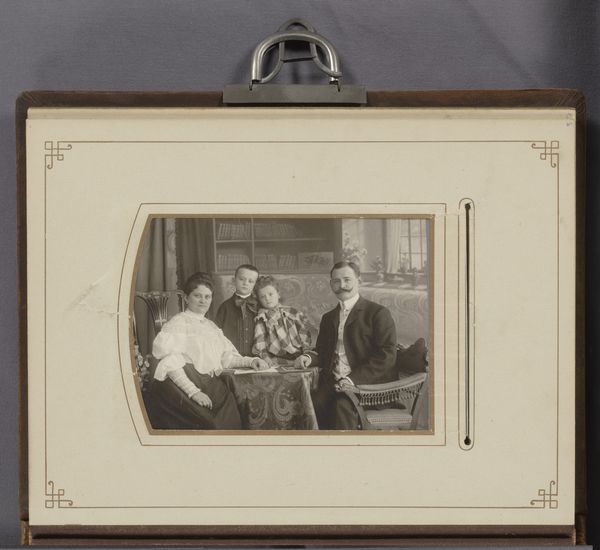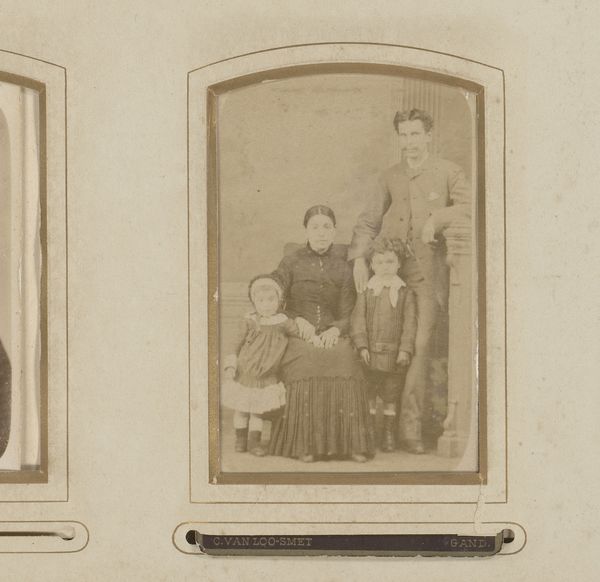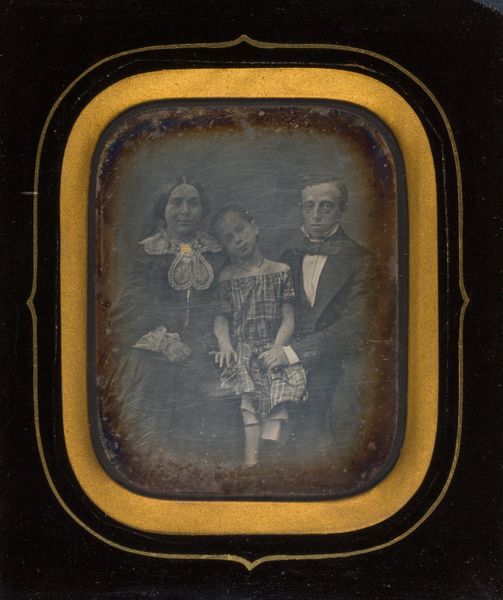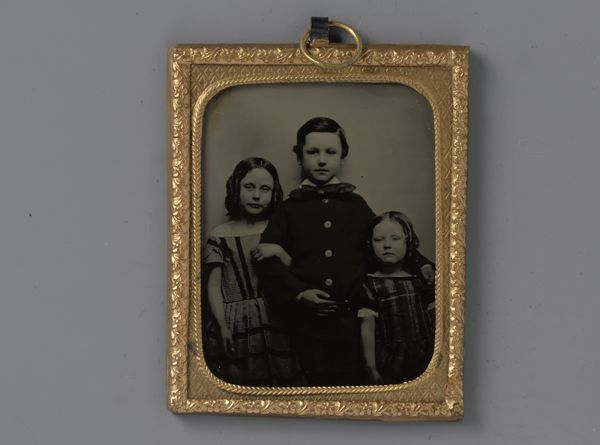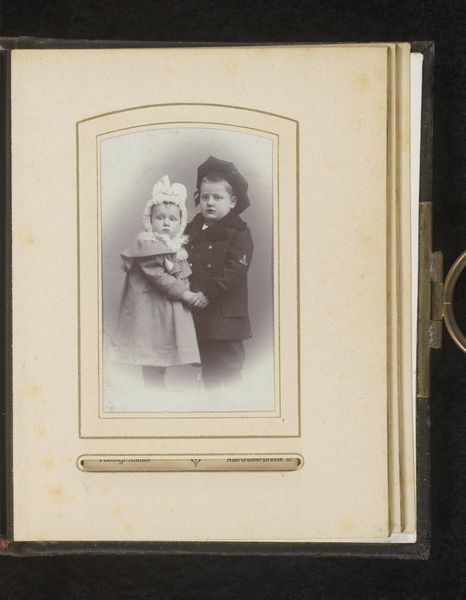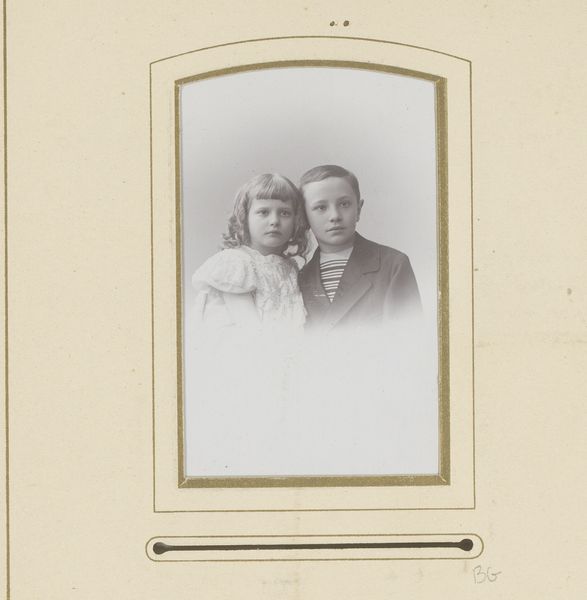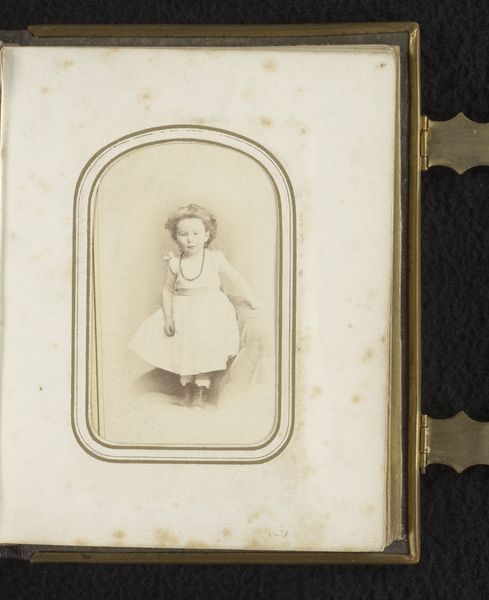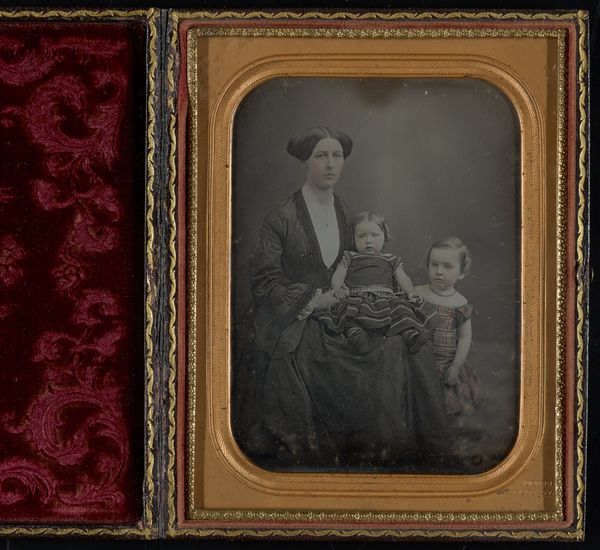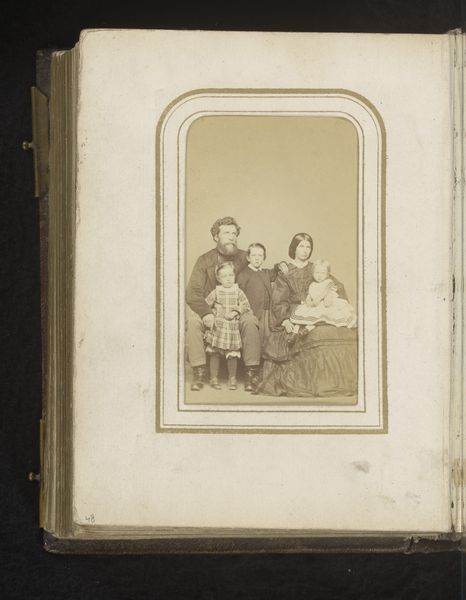
3 generatie-portret van Gerrit de Veer (op pastel), Aart de Veer Gzn en de zevenjarige Gerrit Willem Aart de Veer Possibly 1852 - 1855
0:00
0:00
carlrensing
Rijksmuseum
daguerreotype, photography
#
portrait
#
16_19th-century
#
daguerreotype
#
photography
#
group-portraits
#
realism
Dimensions: height 140 mm, width 170 mm, height 73 mm, width 100 mm
Copyright: Rijks Museum: Open Domain
Editor: Here we have what's titled, "3 Generation-Portrait of Gerrit de Veer, Aart de Veer Gzn and the seven-year-old Gerrit Willem Aart de Veer" made between 1852 and 1855, held at the Rijksmuseum. It's a daguerreotype – quite a photographic feat for the time! The somber faces give off an almost haunting, ancestral feeling. What stands out to you? Curator: What I find striking is the way they've embedded a painted portrait *within* the photograph itself. It’s a deliberate invocation of the past, wouldn't you agree? Notice how the older Gerrit de Veer is represented, then echoed by his son and grandson posing beside his image. It's a clear visual statement about legacy and lineage, continuing a family narrative through images across generations. It's as if they’re attempting to solidify their place in history through this combined media – painting *and* photography. Editor: That’s a fascinating point. Almost like they are intentionally layering symbols of the past onto a technology of the present, wouldn’t you say? To what end? Curator: Precisely. Think of what photography meant in the mid-19th century. It offered unprecedented realism. And to position themselves within that new medium, alongside their ancestor immortalized in paint, suggests they understood the power of image-making. It speaks to their consciousness of posterity, their desire to control how they’d be remembered. They’re not just presenting themselves, but carefully curating their image for future eyes, much like we are now doing. It suggests a deep-seated awareness of mortality and the desire to transcend it. Editor: It definitely adds another layer of meaning to the work, thinking about how consciously crafted it is, compared to what seems on the surface a fairly standard, formal family portrait. It makes me wonder about the stories behind other family portraits of the period and the visual traditions they engage in and break from. Curator: It all speaks to how images are never simply recordings of reality, but active participants in constructing it, influencing how we see ourselves and those who came before.
Comments
No comments
Be the first to comment and join the conversation on the ultimate creative platform.
